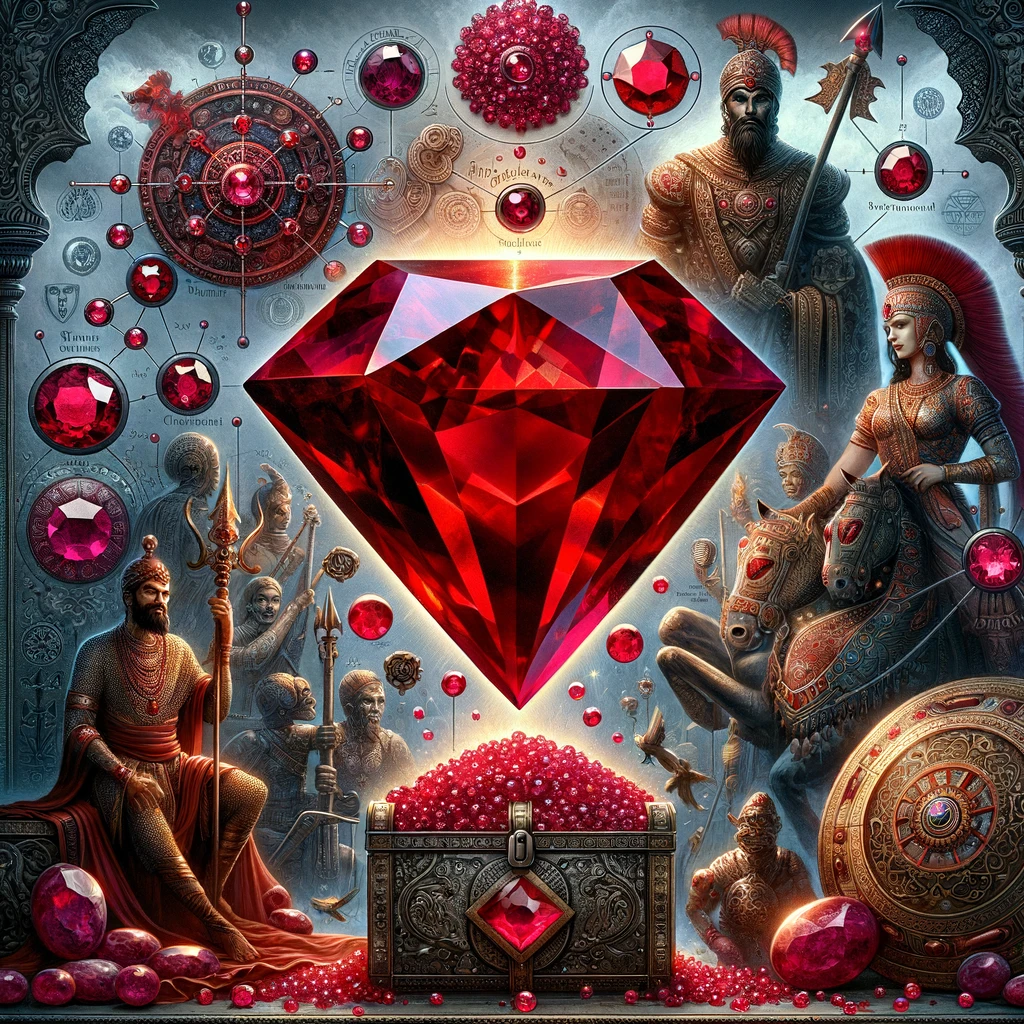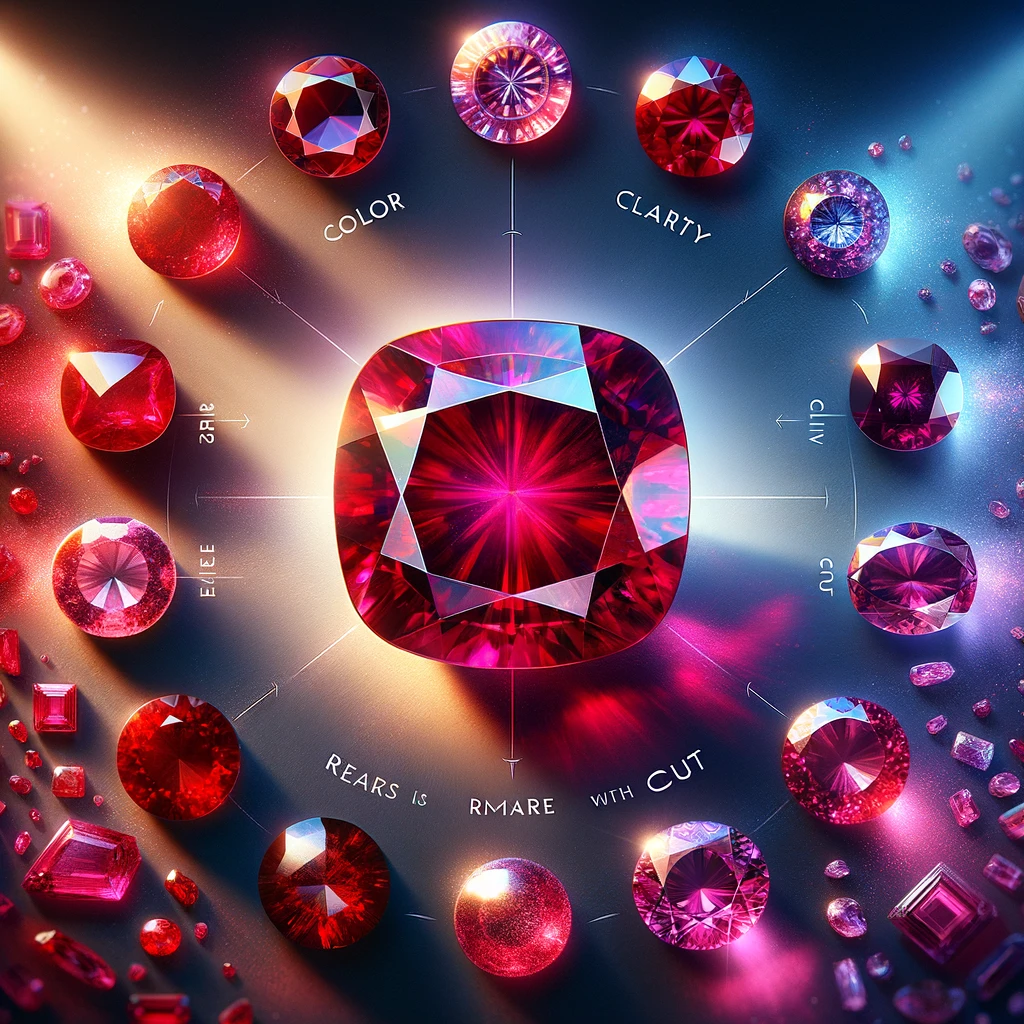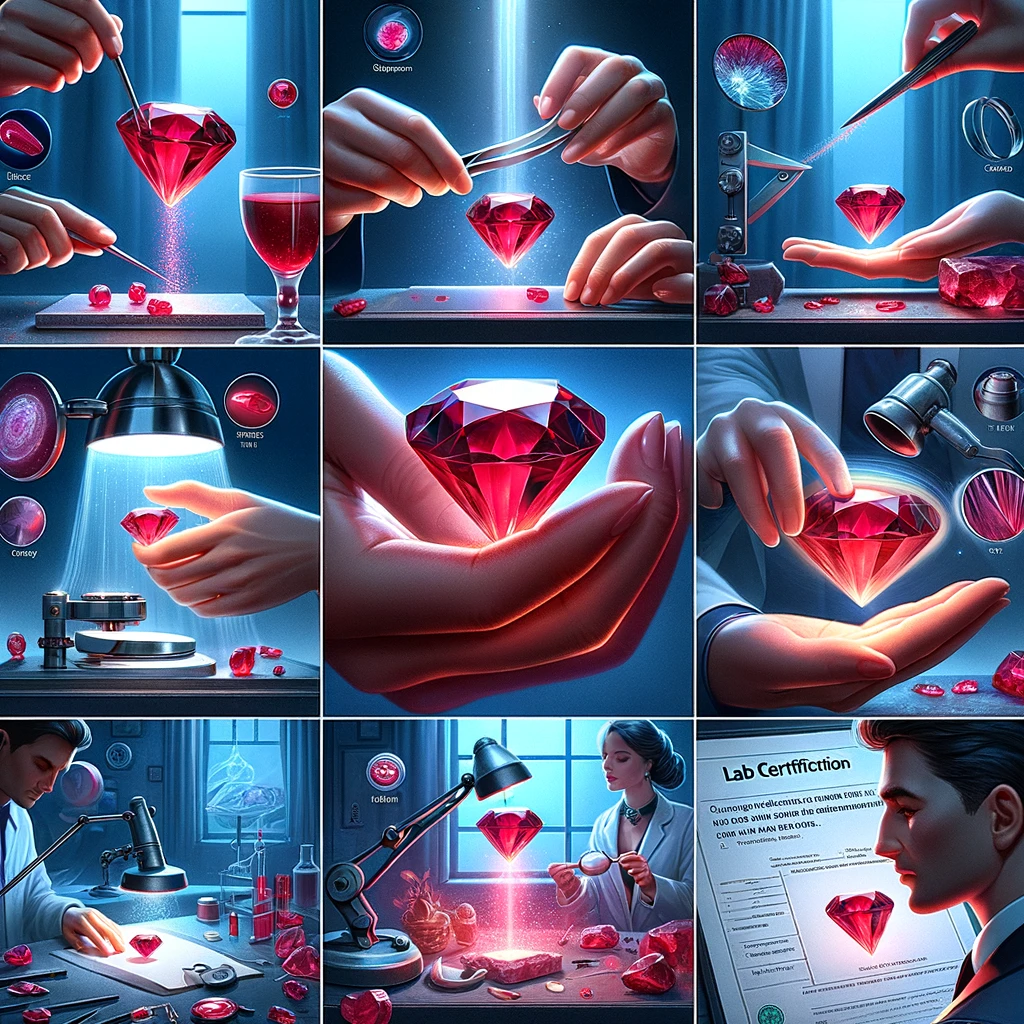How to Tell if a Ruby is Real
So, you've got your eye on a ruby, huh? I mean, who can blame you? These gems are not just red; they're the embodiment of passion, the very essence of a love that's as fiery as their color. But here's the kicker: in this dazzling world of jewels, not every ruby is the real McCoy. That's right, my friends, distinguishing a bona fide ruby from a clever look-alike is an art form in itself. But fear not! By the end of this journey, you'll be a bona fide ruby connoisseur, or at the very least, you won't be easily fooled by the fakes.
Understanding Rubies
First things first, let's get acquainted with our star of the show. Rubies, with their rich, vibrant reds, have been the object of human desire for thousands of years. These gems aren't just pretty faces; they're tough cookies too, ranking a solid 9 on the Mohs scale of hardness. That's just a step down from diamonds! But what really makes a ruby a ruby? It's all about the corundum, baby. Pure as the driven snow, with just a hint of chromium to give it that signature red.

A Brief, Sparkly History
Imagine, if you will, ancient warriors emboldened by rubies in their armor, believing these stones granted invincibility. Or picture a maharaja's treasure chest, overflowing with these crimson beauties, each one telling a tale of power, wealth, and seduction. Rubies have been revered across cultures, symbolizing everything from love and passion to courage and life itself. They say if you dream of rubies, good fortune is on its way. And who are we to argue with that kind of optimism?
The Science Bit
Here's where it gets geeky (but in a cool way, I promise). Rubies are the red siblings in the corundum family, the same clan that sapphires hail from. What sets rubies apart is their color, thanks to traces of chromium. And before you ask, no, not the browser. This element is what gives rubies their dazzling red hues, from deep, dark crimsons to brighter, almost pink shades. But not all red stones are created equal. The presence of inclusions, those tiny imperfections, can actually be a sign of authenticity. After all, in the world of gemstones, it's our flaws that make us genuine, right?
Playing Detective with Your Ruby - The Visual Inspection
Color Me Curious
When it comes to rubies, color isn't just a trait; it's their soul. The ideal ruby flaunts a deep, vivid red, with just a whisper of blue. But here's where it gets spicy: not all rubies read from the same color script. Some lean towards a more purplish red, while others might flirt with a lighter, pinkish hue. The key? Look for richness and depth of color. A real ruby doesn't just catch the light; it dances in it, creating a flame that seems to burn from within. If your gem's red seems flat or too uniform, raise those eyebrows – it might be playing dress-up.
Clear as Mud: Transparency and Clarity
Now, don't expect your ruby to be as clear as your grandma's crystal. Real rubies are like us – beautiful but flawed. These gems often come with inclusions, which are like birthmarks. In fact, if a ruby is too perfect, it might just be too good to be true (hello, synthetic stones!). But here's the catch: a certain level of clarity is still a must. A real ruby should allow light to pass through, making it glow warmly, like a cozy fire on a winter's night. If it's as opaque as your morning coffee, you might want to ask some questions.
The Shape of You
Rubies can be cut into all sorts of shapes, from the classic oval and cushion to the more adventurous heart and emerald cuts. The cut doesn't necessarily signal authenticity, but it can influence how the color and light play together in a mesmerizing performance. A well-cut ruby should showcase its color and brilliance to the max, making you fall in love at first sight. If the cut makes the ruby look dull or lifeless, it might be time to play the field and look elsewhere.

Getting Hands-On – Physical Tests to Confirm Authenticity
Alright, detectives, it's time to roll up those sleeves and get hands-on. But remember, we're dealing with precious stones here, so let's keep it classy and gentle.
The Hardness Test
Rubies are tough – only a diamond can scratch them. If you're daring (and very careful), try the unobtrusive corner of your gem against a piece of glass. If it leaves a scratch, congratulations, you've got a hardy stone! But if your ruby seems more butter knife than scalpel, it might not be the real deal.
Heavyweight Champion: Density and Weight
This one's a bit trickier without specialized equipment, but real rubies have a certain heft to them due to their high density. If you've handled gemstones before, you might feel the difference. A real ruby will feel weighty and substantial compared to its size. Fake stones, like glass or plastic, might look the part but won't have the same gravitas.
The Warmth of a Ruby
Here's a fun party trick: Rubies can retain warmth. Warm your gem in your hand or breathe on it like you're fogging up a mirror. A real ruby will hold onto that warmth for a moment, feeling like a tiny ember in your palm. Synthetic or fake stones? They'll go cold faster than your ex's heart.
Sometimes, despite our best efforts, we need to call in the experts. And when it comes to rubies, a professional gemologist's opinion is worth its weight in gold.

Loupe There It Is
A jeweler's loupe is like a window to the soul for gemstones. Professionals can spot those telltale signs of a synthetic stone – too-perfect inclusions, air bubbles, or unnatural color zones. If you're serious about your ruby, a trip to a trusted jeweler can give you peace of mind (or a reality check).
Light It Up
Ever heard of the silk phenomenon? It's this cool effect where natural rubies, under certain lighting, show a silky sheen thanks to their tiny rutile inclusions. It's like your ruby is glowing from the inside. Professionals can also perform various light tests to check for fluorescence, another hallmark of some real rubies.
Getting Certified
If you're looking at a significant investment, consider a lab certification. These reports detail everything from the stone's origins to its treatments and overall quality. Think of it as a biography of your ruby, confirming its authenticity and value.
